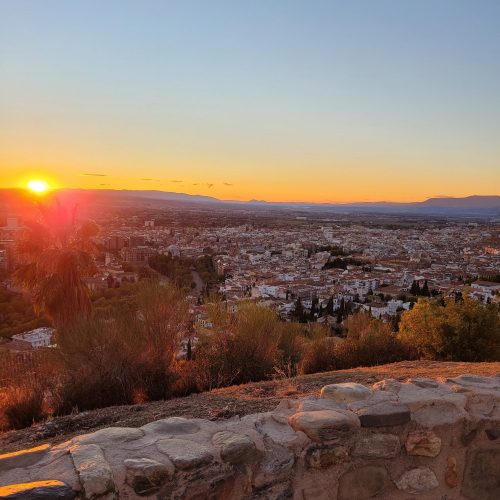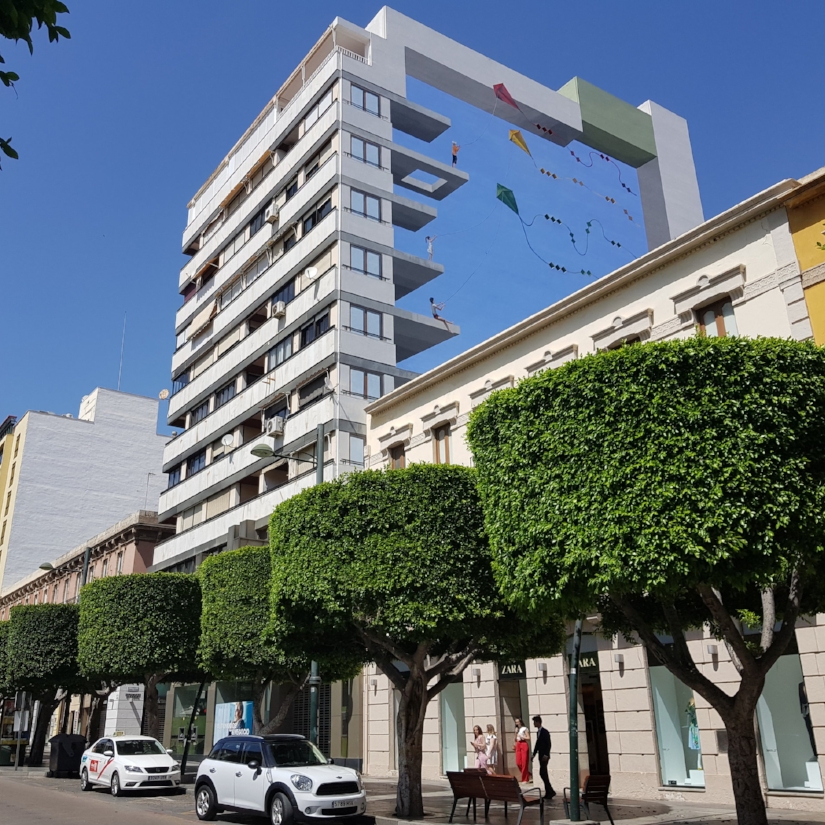
What You Need to Know About Málaga
Málaga, Andalucía
An Overview:

One of the most easily accessible Andalusian cities from abroad, Málaga is sometimes overlooked as simply a pitstop en route to the beautiful pueblos blancos (white villages), famous Costa del Sol beaches, and/or other historical andaluz cities like Sevilla, Córdoba, or Granada. However, Málaga herself has A LOT to offer in terms of beauty, beaches, and history.
With a population of 571,026 (in 2018), Málaga is the second most populous city in Andalucía (sixth in Spain). Still, we would say Málaga manages to maintain a relaxed, seaside ambiance despite the city’s size and population. In addition to the Malagueta beach (and the many neighboring beaches you can reach on foot or bicycle following the Paseo Marítimo) and the bustling nightlife and gastronomic scene, visitors can experience Málaga’s long, winding history through the plethora of historic landmarks.
From the Roman theater that dates back to the 1st century, to the Moorish castle and fortress walls (11th – 14th centuries), to the Renaissance-Baroque Cathedral (16th – 18th centuries), the city is bursting with a mixture of architecture and history. Aside from its famous Moorish and Roman ruins, Málaga is also the hometown of world-renown painter Pablo Picasso and the Hollywood star Antonio Banderas!
 On top of that, visitors can enjoy Muelle Uno (essentially “Pier One”), Málaga’s port, which serves as a hub of entertainment, boating, and fine dining. Additionally, the city boasts countless museums such as those of the modern art arts—the Centre Pompidou and the CAC (Centro de arte contemporáneo, free entrance)—a wine museum, a glass and crystal museum, a dollhouse museum, two Pablo Picasso museums, and much more. Málaga truly has something for everyone!
On top of that, visitors can enjoy Muelle Uno (essentially “Pier One”), Málaga’s port, which serves as a hub of entertainment, boating, and fine dining. Additionally, the city boasts countless museums such as those of the modern art arts—the Centre Pompidou and the CAC (Centro de arte contemporáneo, free entrance)—a wine museum, a glass and crystal museum, a dollhouse museum, two Pablo Picasso museums, and much more. Málaga truly has something for everyone!
Transport options to arrive: Plane, Train, Bus or Car
Málaga is home to one of Spain’s most popular airports (AGP) and so both domestic and international flights are generally economical. If you arrive by plane, we recommend catching the Cercanías train directly into the center. For less than 2€, you can reach the city more quickly—and much more affordably—than by taxi. Málaga is also easy and affordable to reach by train (the high speed AVE train is available from Madrid and Barcelona) or bus (check out the Alsa availability here). If you plan to travel around Andalucía during your say, we might recommend renting a car.
Recommended time of year to visit and length of visit: Year-round, the coastal weather in Málaga makes this a desirable destination most of the time. If you dislike sightseeing in high temperatures, you might want to avoid the height of the summer (July and August). This is a particularly nice escape from colder weather in other locations during May or October (when the temperatures still tend to be nice enough to visit the beach in swimwear here, but not necessarily elsewhere). You can enjoy a quick trip in one weekend or easily extend your visit to a week, especially if you plan to use the city as your home base for any of these amazing day trips.
 Fun Fact: If you are familiar with cathedrals and architecture, you’ll quickly notice that the Cathedral of Málaga is built in a variety of architectural style and, in fact, is actually unfinished! Officially called Nuestra Señora de la Encarnación (Our Lady of Incarnation), this cathedral is not only a religious monument but also a historical landmark for the city. Locals will tell you a wide range of different stories about how and why the Cathedral ended up with only one of the intended two towers. Whichever version of events you choose to believe, you’ll sound very in-the-know if you call the cathedral by its nickname: La manquita (or, essentially, the One-armed Lady).
Fun Fact: If you are familiar with cathedrals and architecture, you’ll quickly notice that the Cathedral of Málaga is built in a variety of architectural style and, in fact, is actually unfinished! Officially called Nuestra Señora de la Encarnación (Our Lady of Incarnation), this cathedral is not only a religious monument but also a historical landmark for the city. Locals will tell you a wide range of different stories about how and why the Cathedral ended up with only one of the intended two towers. Whichever version of events you choose to believe, you’ll sound very in-the-know if you call the cathedral by its nickname: La manquita (or, essentially, the One-armed Lady).
Top Three Must-sees:
1. Alcazaba and Castillo de Gibralfaro: Dating back to the eleventh century, the fortress and castle that stand out prominently in the Málaga skyline are not to be missed! Start out exploring the alcazaba (fortress) then trek the winding upward path to the castillo. Don’t forget to stop at the look-out point for an amazing view of the port and city. FREE entrance Sundays after 4pm
 2. La Malagueta and El Paseo Marítimo: From Muelle Uno, continue along to the other side of La Farola (the famous lighthouse) to discover Málaga’s most popular beach, La Malagueta. Teeming with tourists, it is not necessarily the most relaxing beach, but it is sure to provide hours of sun and entertainment. If you’re interested in a less crowded, more local experience we recommend taking a long walk or renting bikes to travel along El Paseo Marítimo (the seaside promenade) east to further beaches. It’s a bit of a trek on foot so if you opt for that we recommend taking the number 11 bus to El Palo, enjoying the sand and sun, and walking back afterwards. For a seaside lunch or dinner, we recommend stopping in the Pedro Galego neighborhood on the way home.
2. La Malagueta and El Paseo Marítimo: From Muelle Uno, continue along to the other side of La Farola (the famous lighthouse) to discover Málaga’s most popular beach, La Malagueta. Teeming with tourists, it is not necessarily the most relaxing beach, but it is sure to provide hours of sun and entertainment. If you’re interested in a less crowded, more local experience we recommend taking a long walk or renting bikes to travel along El Paseo Marítimo (the seaside promenade) east to further beaches. It’s a bit of a trek on foot so if you opt for that we recommend taking the number 11 bus to El Palo, enjoying the sand and sun, and walking back afterwards. For a seaside lunch or dinner, we recommend stopping in the Pedro Galego neighborhood on the way home.
3. Plaza de la Merced: Perhaps not a main sight you’ll find in the guidebooks, Plaza de la Merced is a happening square full of fun bars and restaurants that serve food throughout the day. The area is a favorite for young artists and creators as Picasso’s childhood home is located in the northwest corner. His childhood home has been turned into a museum, called the Museo Casa Natal de Picasso, and can be toured by visitors. Just off the square, you can find the mercado which has been recently renovated from its traditional market layout into a more modern meet-up place that serves wine, craft beer, and tasty food into the night hours. Overall, this plaza is a great area to get quality food outside of Spain’s normal eating timetable.
 One thing to drink: When in Málaga one simply must try the sweet Málaga virgen wine and there’s no better place to have it than the famous El Pimpi restaurant. With its lively Andalusian atmosphere, decorations, and perfect location you are sure to enjoy this restaurant and bodega. Don’t forget to check out all the autographed photos to find out which of your favorite celebrities have enjoyed a glass of Málaga virgen there, too! While you’re at it, consider trying the Cartojal as well—it’s the official drink of the Málaga feria.
One thing to drink: When in Málaga one simply must try the sweet Málaga virgen wine and there’s no better place to have it than the famous El Pimpi restaurant. With its lively Andalusian atmosphere, decorations, and perfect location you are sure to enjoy this restaurant and bodega. Don’t forget to check out all the autographed photos to find out which of your favorite celebrities have enjoyed a glass of Málaga virgen there, too! While you’re at it, consider trying the Cartojal as well—it’s the official drink of the Málaga feria.




